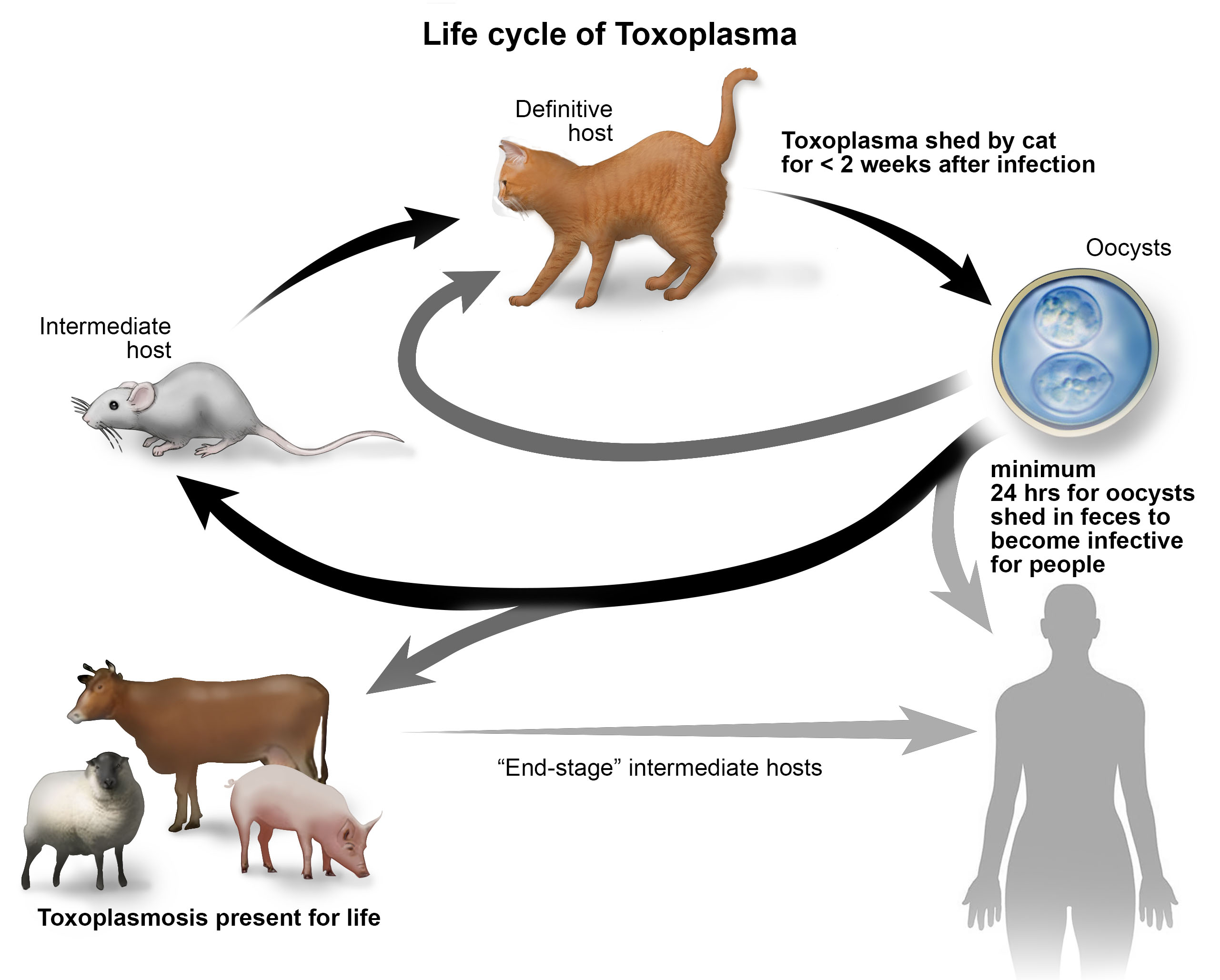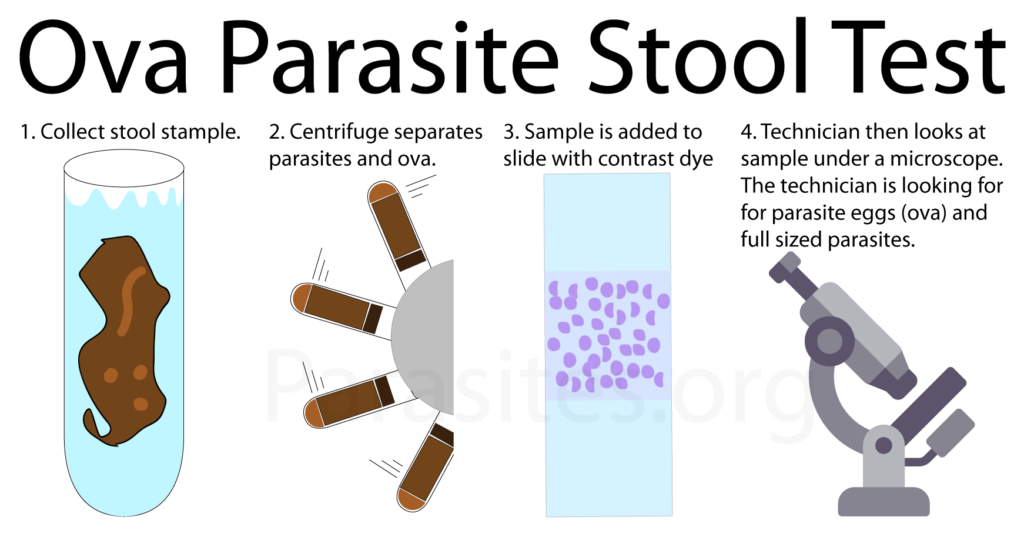What's wrong with parasite tests? How stealth infections are making us sick.

Have you tested negative for parasites?
I hate to break it to you, but you may still have them.
In fact, you probably do.
As Dr. Todd Watts always says…”if you have a pulse you have a parasite.”
It’s useful to enter into this topic with a brief summary of my own parasite story, to illustrate just how common the missing parasite link is in modern healthcare.
I’m someone who has tested negative for parasites with the conventional medical community three different times.
I’ve also had multiple parasite negatives with functional PCR stool tests like the GI-MAP.
Having suspected that I had them for many reasons I won’t go into here, these negative tests were a relief to me.
Whatever my problems are, I thought, at least I don’t have to worry about worms.
But, oh, how wrong I was.
Cut to a few years down the road while I’m going through my first cleanse… and my jaw is dropping everyday watching what I pass.
And, more importantly, all kinds of symptoms that I had been dealing with for years and attributing to my autoimmune disease, suddenly disappeared:
- my intense sensitivity to dairy
- my horrible periods
- my skin breakouts…
Now, I see that one of my biggest health mistakes was putting parasites on the back burner after my negative tests, because addressing them has fundamentally altered my health for the better.
The truth is that if you’re someone dealing with chronic illness, it’s in your best interest to learn about parasitic infections, and the role they could be playing in your health.
Parasites in conventional medicine
Doctors are mostly unaware of how widespread parasitic infections are.
Case and point: I went to my US doctor after spending a year in South Africa working with Baboons and collecting their poop every day, and I still nearly got laughed out of the office when I insisted on being tested for parasites.
Contrary to what most doctors believe, their patients are not “delusional” about suspecting they might have a parasite infection.
In fact these infections are much more common in the developed world than many realize; for example, 12% of the American population is known to be infected with Toxoplasma gondii, a microscopic parasite that you usually get from cats but can cause conditions like schizophrenia!
Fun fact: Toxoplasma gondii infected people have been shown to have a special predilection for risk taking and are positively associated with dangerous driving behavior in literature.
Read: the next time someone cuts you off, instead of flipping them the bird, consider their parasite status…

What are parasites?
Parasites are pathogens that live on or inside of other organisms without providing them with a service.
For example, the human body has evolved to coexist with millions of microflorae that populate the GI-tract and other parts of the body.
But these are not parasites because they provide services for the body like vitamin synthesis and digestive support.
Mosquitoes, on the other hand, are parasites, because they bite us, rob us of blood, transmit disease, and make us itch, while performing exactly zero services for our bodies.
Different Types of Parasites
Parasites can come in many different sizes; some are microscopic and others are more complex and can easily be seen with the naked eye.
Adult tapeworms can reach as many as 49 feet in length!
Microscopic parasites can live inside of your cells (fat cells, red blood cells, etc).
But larger parasites are too big for that--instead, they hang out in the spaces between cells.
While many parasites colonize the gut, they are also commonly found systemically in the brain, liver, lungs, muscles, and other organs and tissues.
Ectoparasites
These are the most common type of parasite.
They include bugs that feed on blood and attach through the skin tissue.
Some familiar examples include:
- Bed bugs
- Fleas
- Flies
- Lice
- Mites
- Mosquitoes
- Ticks
Beyond causing discomfort and annoyance, these creatures can be dangerous due to their role as a vector in pathogen transmission.
They carry many undesirable microbes that they spread when they feed, such as Borrelia Burgdorferi (Lyme), Bartonella, Babesia, Plasmodium parasites (malaria), and the West Nile virus.

Helminths
Helminths refer to what you likely picture when you think of parasites: worms!
These parasites can easily be seen by the naked eye – though the size can range anywhere from millimeters to meters.
There are two main groups of parasitic helminths:
Roundworms
Also known as “nematodes”, these commonly infect the intestines, liver, lungs, skin, and muscle tissue.
For example:
- Ancylostoma duodenale (Hookworm) infects the gut and causes anemia.
- Ascaris lumbricoides (Round worm) causes intestinal discomfort.
- Enterobius vermicularis (Pinworm) infects the colon and makes the anus itch.
- Necator americanus (Hookworm) also infect the gut and causes anemia.
- Strongyloides stercoralis most commonly in the gut and each new batch of larvae can reinfect.
- Trichnella spiralis can cause upset stomach and infect muscles, causing pain.
- Trichuris trichiura (Whipworm) causes painful, bloody diarrhea.

Flatworms
These include flukes and tapeworms. Each has a flattened body, though their shapes are different from one another.
Flukes have a leaf-like shape and can invade the blood, intestines, liver, and lungs. In fact, a common cause of biliary problems is fluke infection that has damaged the bile ducts.
Tapeworms, on the other hand, are long, segmented, and ribbonlike. They are most commonly found in the small intestine and can cause nausea and weight loss. Tapeworms can also migrate to the gallbladder and block the bile duct!
Examples of each include:
- Clonorchis sinensis (liver fluke) many people are infected after eating sushi or raw fish.
- Schistosoma mansoni (blood fluke) hides in the intestines and steals nutrients.
- Taenia solium (long tapeworm) many people are infected after eating under cooked pork.
- Taeniarhynchus saginatus (long tapeworm) many people after infected after eating under cooked beef.
Protozoans
These microscopic parasites are single-celled, but the danger they pose to human health can be enormous.
Examples of protozoan parasites include:
- Babesia microti is a Lyme co-infection that can cause flu-like symptoms and anemia.
- Blastocystis hominis infects intestinal cells and can cause leaky gut and food sensitivities.
- Cyclospora cayetanensis can result in explosive bowel movements and diarrhea.
- Cryptosporidium parvum causes watery diarrhea and digestive distress.
- Dientamoeba fragilis causes diarrhea, abdominal pain, and appetite loss.
- Entamoeba histolytica triggers stomach pain and loose stools, which may be bloody.
- Giardia lamblia causes diarrhea, greasy stools that float, and upset stomach.
- Leishmania tropica leads to skin sores, which may start as bumps.
- Plasmodium falciparum infects red blood cells and causes malaria, characterized by flu-like symptoms.
- Toxoplasma gondii sparks mild flu-like symptoms and enlarged lymph nodes.
- Trichomonas vaginalis triggers burning and itching of the reproductive organs.
- Trypanosoma cruzi may lead to enlarged spleen and liver, and abnormal heart rhythms.

How do people get parasites?
The short answer is everywhere.
These hearty and resilient creatures have evolved to be in every ecosystem and adapt to a diverse array of stimuli.
In fact, there was a recent story in the news about a nematode roundworm that was found frozen in permafrost for 42,000 years, yet was still able to be revived and began moving and eating like no time had passed!
With this in mind, it’s safe to conclude the notion that the developed world is somehow devoid of any parasite presence because we practice “good hygiene” is simplistic at best, and dangerous at worst.
We have parasites in the developed world, we just pretend that we don’t.
Common sources of infection include:
- Blood transfusions
Labs only test blood for a handful of parasites, and we know that there are hundreds! What’s more, most people who donate blood don’t have any idea if they may be infected.
- Food
Raw or undercooked animal products can be sources of parasites, but so can raw fruits and veggies! This is why sourcing high-quality, organic food is so important.
- Other people
Parasites can be passed congenitally, sexually, and sometimes by contact alone.
- Pets
Handling pet excrement can result in parasite transmission. Eggs can also stick in pet fur (wash you hands).
- Soil
Hookworm and whipworm commonly live in soil and may linger for years! Be especially careful around areas where animals poop.
- Surfaces
Pinworm eggs, especially, can linger in the air and on surfaces for a few weeks’ time.
- Toilets
Again, pinworm eggs can easily live on toilet seats, so it’s always smart to use a toilet paper barrier when going to the bathroom in public.
- Water
Fresh water bodies may contain certain strains of water-borne parasites such as Giardia. But even some municipal water sources are infected as well.
Keep in mind that if you have a weakened immune system you are at a much higher risk of contracting parasites.

How do parasites impact your health?
Parasites can obstruct and disrupt your organ function.
For example, some worms can block intestinal valves, and flukes can clog the bile ducts in the liver and gallbladder.
They can also disrupt mitochondrial function, affecting healing processes at the most foundational level.
Parasites are smart – they’ve been evolving for years to outsmart our immune systems.
Some single-celled parasites can even change the proteins on their surface to avoid being detected by our immune army.
This, in turn, can alter our immune system to skew towards what is called a TH2 response, setting the stage for autoimmunity.
Parasites have also been shown to harbor toxins:
- Lyme and other pathogenic bacteria has been shown to live inside of helminths
- Helminths can eat their weight in heavy metals
- Mold and mycotoxins reside inside of parasites
- Viral and retroviral material is associated with parasite presence
Which health issues and diseases can be caused by parasites?
While for some diseases and conditions, parasites can play a direct role (IBS, autoimmunity, etc.), in others their role can be more indirect.
Parasite presence can elicit a host of different symptoms that range from mild to severe, and that tend to vary according to which species are present.
And often, these symptoms can be misattributed to other diseases.
Some of the most common signs and symptoms of parasite infection include:
- Abdominal pain or discomfort
- Air hunger
- Allergies
- Anemia
- Anxiety
- Arthritis
- Autoimmune disease
- Bed-wetting (kids)
- Bladder inflammation
- Bloating
- Chronic fatigue
- Constipation
- Diarrhea
- Eye inflammation
- Fever
- Flu-like symptoms
- Food sensitivities
- Gallbladder and bile duct disease
- Gassiness
- Hashimoto’s thyroiditis
- Headaches
- Insomnia
- Itching around the anus
- Leaky gut
- Low blood sugar
- Muscle and joint pain
- Nausea
- Nutritional deficiencies
- Seizures
- Skin rashes and sores
- Teeth grinding
- Vomiting
- Weak immunity
- Weight loss
A big clue for parasitic infection is if your symptoms tend to come on or exacerbate at night.
Parasites tend to be more active at night, though symptoms that happen during the day can still be caused by parasites.
However, it can often be difficult to pin down exactly when infection occurs.
Sometimes parasites cause immediate reactions, but others take months or even years to cause any symptoms.
How to detect parasites
The standard ways to detect parasites include stool tests, blood tests, and intestinal inspection.
Blood and stool tests
Ova and Parasite tests are stool tests where a stool sample is sent off to the lab.
A technician then examines the sample using special stains that help to detect parasite presence under the microscope.

While it’s best practice to provide 3 different stool samples from separate days to reduce the risk of missing parasites, it’s still very common for these labs to miss detection. More on that below.
There are also blood tests to consider.
While there are no blood tests that can test for all parasites, there are a few specific blood tests that look for certain strains.
These tests look at:
- Antibodies
This measures the body’s immune response to certain types of parasites to determine if they might be present.
- Visible parasites
These are for protozoans that infect the red blood cell such as Malaria and Babesia. Lab technicians look at the blood under a microscope for visual inspection.
Imaging
CAT and MRI tests can sometimes be helpful for parasite detection.
Very large worms can also sometimes be visible in the gut.
But often these scans can help with detection in an indirect way through observing how the infection may be affecting body organs and tissues.
For example, an enlarged looking liver and spleen would indicate a Plasmodium infection.
DNA and PCR Testing
Some tests use PCR methodology to compare blood and stool samples with a parasite DNA database.
However, this method also has limitations as many parasites are not yet included in the database, and parasite DNA is known to degrade quickly after the death of the organism.
Are parasites tests accurate?
In a word: no.
Here are some of the reasons why most parasite testing won’t necessarily give you a reliable result:
- Improper storage
Under most conditions, if a sample isn’t examined or put into preservative within 30 to 60 minutes after passing, it will not be accurate.
- Insufficient availability
Often doctors, especially western doctors who have not been trained on these topics, do not have the proper knowledge to order the correct test, and insurance may not cover it if they do.
- Insufficient training
A shortage in the lab technician field has meant that many are not highly trained or experienced, and it can take a trained eye to detect many types of parasites.
- Parasites aren’t being expelled
Stools don’t always reflect what’s happening inside of the body. Many parasites may be hiding in the gut and tissues while the sample is being given, just as they do for the vast majority of their lives.
- Rapid DNA destruction
Many species of parasites have been documented to destroy their DNA when they die. This means that if someone has a particularly slow transit time or if there are any delays in analyzing the sample, detection through DNA matching will be unsuccessful.
- Shortage of time
Medical labs are becoming more and more rushed for time as they deal with many tests coming in. Errors may result in rushing through the process.
My preferred testing options
Creating Balanced Health Scans

Bio Resonance scans like the ones we use with Creating Balanced Health can help to detect which (if any) pathogens and parasites are resonating in the body.
While this may sound “woo” there’s actually an impressive amount of science behind Bio Resonance methods.
It’s been shown to effect positive change for conditions like:
- Smoking cessation
- Stomach pain
- Rheumatoid arthritis
- Fibromyalgia
- Allergies
- Eczema
- Asthma
- Autoimmune disease
Most importantly, I see clients obtain great results using these tests to guide where they should focus their attention during parasite cleanses.
Functional Blood Work

There are multiple markers in the bloodwork you get from the doctor’s office that can help to differentiate whether or not you might have a parasite infection.
One of those markers is Ferritin.
If you have consistently low Ferritin that doesn’t respond to diet and supplement changes, you should be thinking parasites.
Parasites eat Ferritin, and Iron anemia is heavily associated with parasite infection in literature.
Another tell-tale sign is if you have elevated Eosinophils which are our body’s immune soldiers that work on Parasites in particular.
Elevated Basophils and Monocytes can also potentially be indicators of parasites.
Are we more vulnerable to parasites in modern life?
While it’s true that we have evolved impressive defenses to fight off parasitic invaders, we have a much different environment today than we did throughout our evolutionary history, which may make us more vulnerable to infection.
The new presence of ubiquitous toxins - from plastics, pollution, and chemicals – has been shown to decrease the body’s immune response and to alter parasite behavior.
One theory is that our new heavier toxic burdens create an environment in the body that is much more conducive to parasitic infection, and that impairs many of the natural defenses we might use to keep these presences under control.
In this vein, we can help to protect ourselves from infection by engaging in clean living and doing regular parasite cleanses.
What should you do if you suspect you have a parasitic infection?
Consider ordering a Creating Balanced Health Scan to help confirm any presence you suspect you might have (use code GUTSYGREEN of $20 off).
Alternatively, find a practitioner who reads bloodwork in a functional way to determine if you have any red flags in your labs that scream parasites (this is something we do inside of our 1-on-1 Mitochondria Mastery programs).
Finally, if you do find signs that point to parasites, you'll want to parasite cleanse!
But do not rush into parasite cleansing without opening your drainage funnel, or disaster will ensue ;-).


